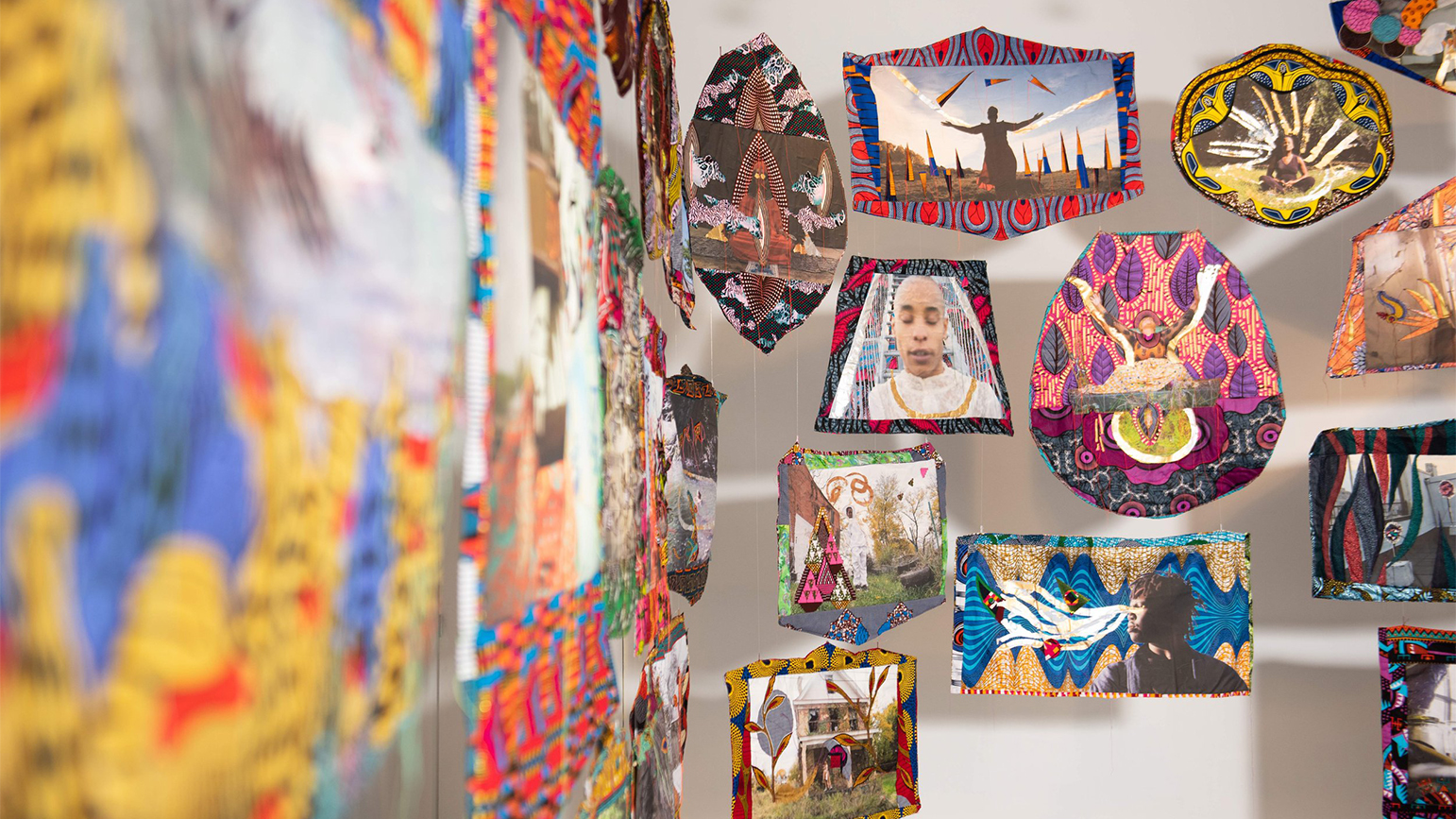
Professor Alisha Wormsley‘s solo exhibition “Remnants of and Advanced Technology” is on view at CUE Art Foundation in New York City September 15 to October 22. The exhibition, is organized with curatorial mentorship from Joeonna Belladoro-Samuels.
“Remnants of an Advanced Technology” is rooted in Wormsley’s ongoing project, “Children of NAN,” a physical and theoretical archive that documents the ways in which Black womxn care for themselves, each other, and the earth. The exhibition draws from this archive to present three bodies of work: photo-based quilts, tapestries, and vessels. To the artist, these objects become maps, circuits, and the womb. Collectively, they begin to formulate a creation story imbued with notions of sovereignty, one that is grounded simultaneously in ancient and futuristic practices.
“There are not enough words, spaces, and worlds dedicated to the richness of Black women,” begins exhibition catalogue essayist Amanda Dibando Awanjo. For the past two decades, Wormsley has positioned herself as an archivist of this matter. The objects, photos, video, films, sounds, philosophies, myths, rituals, and performances she has accumulated as part of Children of NAN serve as a growing survival guide, a tool that lives between legacy and prophecy. Remnants of an Advanced Technology at CUE—the artist’s first solo exhibition in New York City—is but one story in the world being created by Wormsley: a thriving radical dimension that centers the agency and decolonized dreams of Black womxn.
Advancing “technology” beyond the purview of the privileged and powerful, Wormsley imagines another realm—one in which care, healing, sacredness, and science converge through Black matriarchal presence. With the works in the exhibition, she creates portals through time, space, and spirit, transforming each object “into a shrine of itself, and then build[ing] around it until its singularity gives way to a constellation,” remarks exhibition mentor Joeonna Belladoro-Samuels. “In beholding her works and her materials, I can’t help but find home. They are charged with memory, and offer me the aspiration of becoming part of the world being constructed by her hand.”




